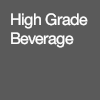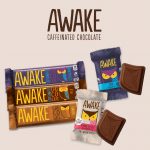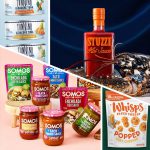Culture Wars: Yogurts Fight for ‘Share of Stomach’

It seems yogurt brands are agreeing to disagree on which of the category’s newest styles will spark the next “Chobani” boom.
Although the category — including both spoonable and drinkable yogurts — has been rapidly growing with dollar sales reaching about $9.1 billion in 2016, it still saw a slowdown from previously steeper year-over-year gains. Some yogurt manufacturers that have felt those lagging sales are looking to new product lines to boost their profits and fight back. While all of them seem to be experimenting with innovation, the direction of that innovation is extremely varied, as can be seen most recently by launches from Hain Celestial and Dannon.
Earlier this month, Hain Celestial’s Greek Gods introduced its Seriously Indulgent Yogurt. The line is made with whole milk, cream and fruit flavors and combinations, and is the newest extension of the brand’s portfolio, which currently includes Greek-style and Kefir yogurts. On the other end of the calorie spectrum, Dannon announced it added new Light & Fit Nonfat yogurt offerings to both its Greek and traditional styles. The new lines are made without artificial sweeteners, instead with stevia leaf extract and cane sugar.
Dissonance regarding what will be yogurt’s next hot trend doesn’t stop there. Shortly after Chobani strayed from Greek with its new traditional low-fat “Smooth” line, General Mills’ announced its French-style indulgent yogurt. Also embracing the “fat is good” era is Icelandic yogurt leader Siggi’s with its newest innovation: indulgent triple cream yogurt.
“Even the premium yogurt brands that paved the way for consumers, allowing them to reconsider the yogurt category as a source for real, fresh and less processed, are having to innovate to keep pace with contemporary food culture,” Laurie Demeritt, of The Hartman Group, told NOSH. “While consumers have incorporated upgraded yogurt brands into their daily routines over the last several years, they are also adding other nutrient dense foods into their repertoire for greater nutritional variety on the very the same occasions.”
Beyond new styles, there is still a divide when it comes to innovation direction. Global flavors such as coconut curry with cashews and guava make yogurt sweet and savory, and caters toward consumer interest in Latin and Asian-inspired cuisines. However, other brands like Stonyfield are looking to more traditional, nostalgic flavors.
A fight of formats is happening between spoonable yogurt and drinkable yogurt. While cups like Chobani “Flips” and Fage Crossovers with customizable toppings allow consumers to personalize their experience, drinkable yogurt’s on-the-go capability has resulted in major interest. Sales of yogurt drinks increased by 62 percent between 2011 and 2016 to $893 million, according to Mintel.
The industry isn’t even in agreement on whether yogurt should stay within its own category. Yogurt leaders like Chobani and Campbell’s are extending their reach into completely new sectors, like dips, dressings and condiments.
Broker John Maggiore said he thinks younger consumers — including the ever-powerful millennials — are driving the evolving innovation in yogurt.
“The younger generation has been exposed to more exotic foods and flavors than in the past and they are driving the need for innovation,” he said. “I believe people get tired of eating the same yogurt everyday and look for something different, more exciting… [Companies] want people to find more occasions to eat yogurt. It’s the share of the stomach they are after.”
Demeritt predicts that lean protein and inherent probiotics will continue to be compelling attributes in the yogurt category, but that there “will also be a greater demand for yogurt that reflects the upward trend around good fat as a better-for-you ingredient along with double and triple fat offerings for permissible indulgence.”
“Long term relevancy in the yogurt category is going to be less about low or no fat and novelty dessert flavors, and more about how yogurt brands demonstrate differentiation via sourcing and production narratives,” Demeritt said.












